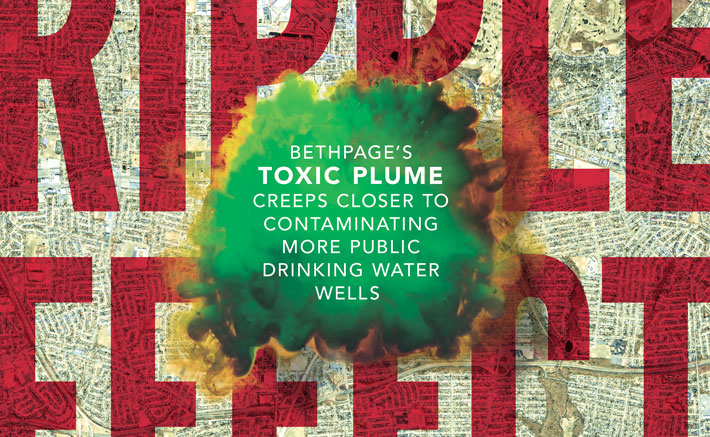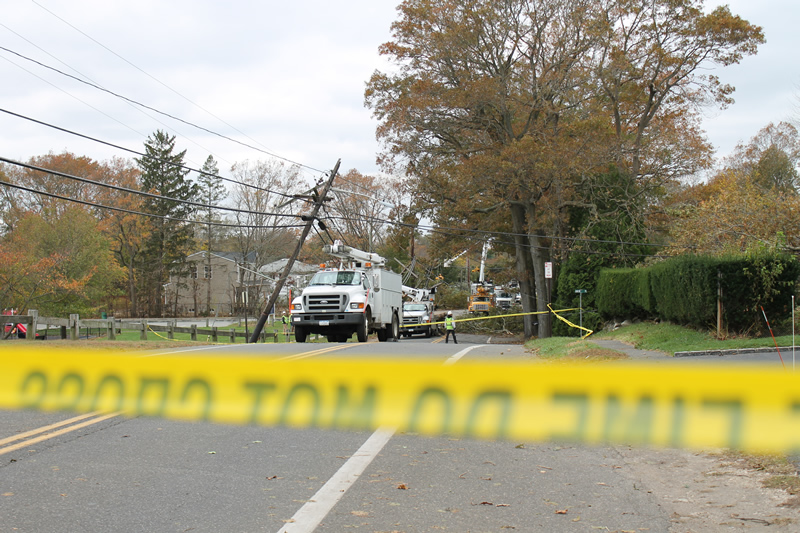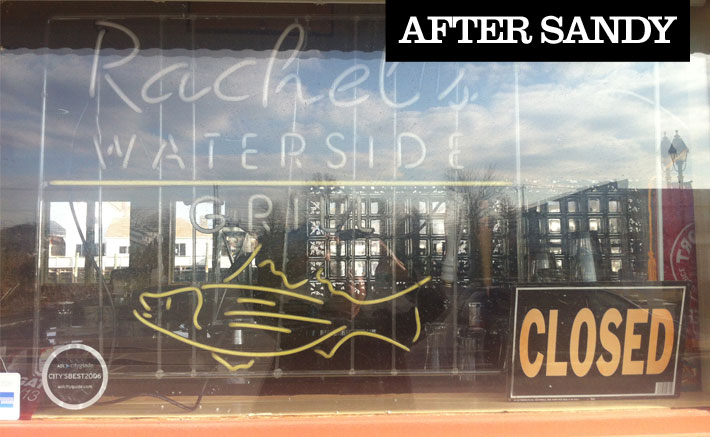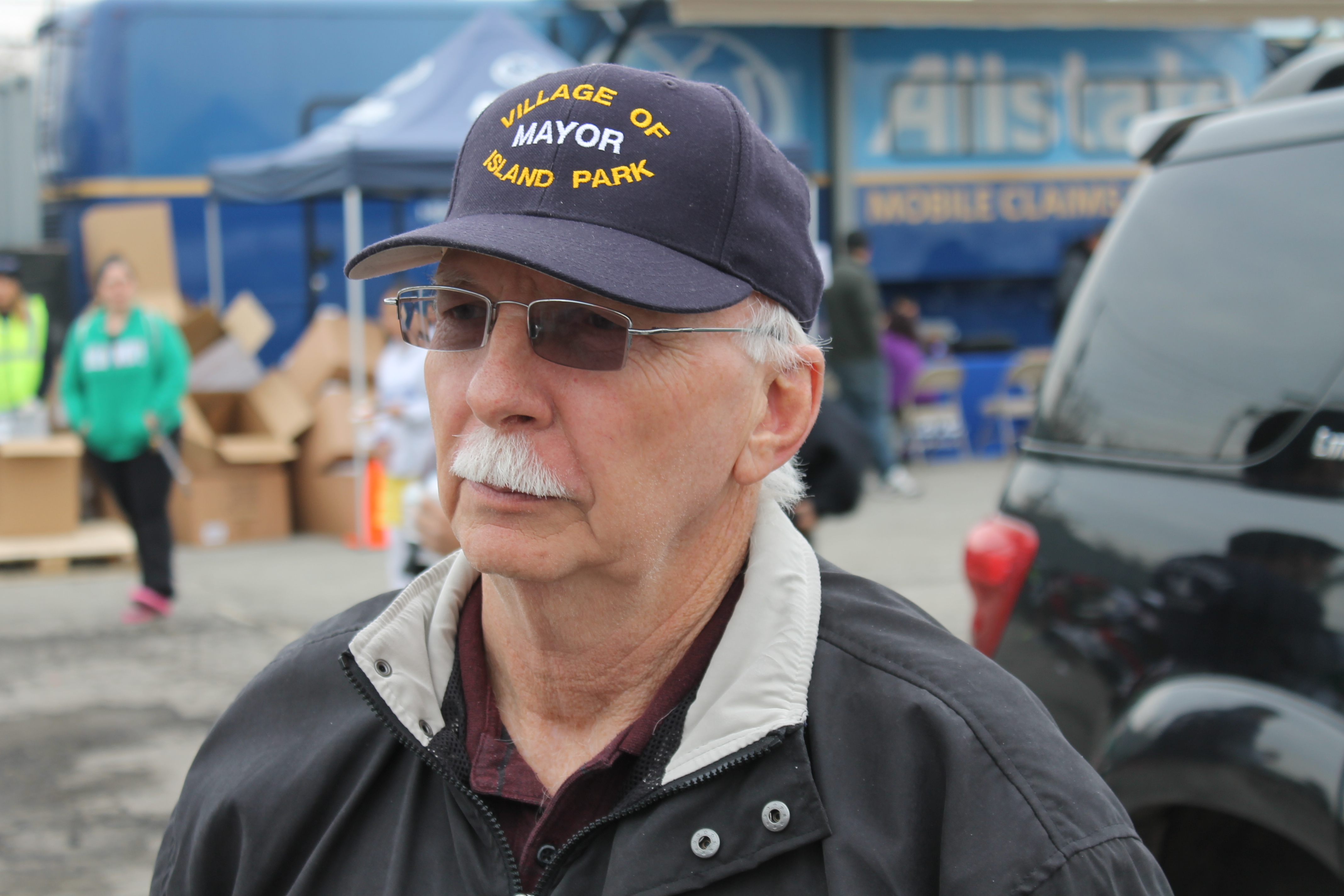

OUTRAGE: HUNDREDS OF CONCERNED RESIDENTS AND HOMEOWNERS PACKED BETHPAGE HIGH SCHOOL JUNE 12 TO WEIGH IN ON THE NYS DEPARTMENT OF ENVIRONMENTAL CONSERVATION’S LATEST PROPOSAL REGARDING HOW TO HANDLE CONTAMINATION AT BETHPAGE COMMUNITY PARK AND PARTS OF A TOXIC PLUME SPREADING SOUTH. (r) JIM HARRINGTON OF THE DEC ADDESSES THE CROWD.
PUMP AND TREAT
Sandwiched between a strip of trees and high-power electrical lines at the end of a residential street, Bethpage Water District’s Plant Four site sits a bit out of place.
Two near-identical, three-story metallic gray silos tower above the neighborhood, attached to two near-identical red brick buildings. There’s a constant humming noise that explodes into a deafening roar once inside, where large computerized consoles flash and blink, packed with gauges and switches. One door leads to a chamber housing what look like six gigantic barbeque gas tanks. Another leads to a basement interwoven with intricate pipes work and valves. Outside, massive pipes jutting from the ground outside shoot intermittent gushes of water.
“This plant was necessary because the water coming out of the ground didn’t meet state or federal standards for drinking water,” explains Sabino, who lead several Press reporters on a tour of the site with Michael Boufis, the water district’s superintendent. “So without this plant, this facility would be shut down and we would not have enough water pumping from all of our wells to serve the Bethpage public in the summertime. So, either we would have to buy water from a neighboring district or do what we did, which is remediate the water to a perfectly clean level so we could continue to use our existing sites.”
Pumps and blowers push air and water through the silos, which are filled with tiny plastic spheres, and break down contaminants, he explains, which are released as gas. The process, called air stripping, removes approximately 99 percent of the pollutants; the final 1 percent, they explain, is removed through the giant tanks through a process called carbon polishing. The 100-percent clean water then travels to a storage tank, into the district’s distribution system and into residents’ homes. It’s also very expensive.
“There’s no chemicals in it [the finished product], zero, none whatsoever,” stresses Sabino. “That’s why we spent $10 million at this site and another $6 to $8 million at another site a few blocks away, so that people could get water that they were confident in. That’s very important to us.
“Plus, I live three blocks away,” he continues. “I drink this water. My grandchildren drink this water. So I’m not going to drink—nor would I expect you or my kids to drink—water that’s tainted with Grumman plume chemicals.”
As efficient as the process is, however, Boufis explains they really had no choice.
“Since we’re dealing with contaminate levels that are so high, we don’t have an option to make a mistake,” he says. “We built this plant to protect our public.”
Plant Four treats 4 million gallons of water here per day and is designed to handle contaminant levels of more than 11,000 parts per billion total VOCs; the state and federal legal limit for drinking water is currently 5 parts per billion. Lately, they’ve been getting levels of 150 parts per billion.
Sabino says Grumman has been critical of the plant as overly cautious, yet he counters, just 700 feet north a monitoring well picked up readings of 5,000 parts and roughly 2,100 feet further north a test well shows 10,000 parts.
“That means everything you see here was absolutely necessary and it means if we get 10,000 parts, we might have to abandon this site,” he says, pointing out among the trees. “Hopefully it’s not going to get that high.
Hopefully the state will do something further and in time to protect this site.”
It’s not the first time Grumman, the Navy or the state’s been wrong regarding the plume, either, blasts Sabino. In fact, he charges, they’ve not only been wrong, but slow and even reluctant to act, since Day One. They denied the plume was even related to Grumman in the mid-1980s, he says. In the early 1990s, they professed it was contained. They didn’t even test the nearby residential neighborhood for soil and vapor contamination, he adds, until they were pressured. Additionally, the entire model they were basing efforts off was completely disproven, he says.
Boufis, who came to Bethpage in 2009 when he was 42 after 21 years at the Suffolk County Water District, where he ran operations, says a Grumman representative told him at his first meeting with the company that he’d be 60 before contamination hit the district’s Plant Six.
“I went into a meeting like a year after,” he recalls.” “I said, ‘By the way, you all need to wish me a happy birthday…I’m 60 years old…’ We were up to 1,600 parts of TCE at Plant 6.”
Sabino faults lax regulation.
“The state has not protected the public in Bethpage, has not done its job, they should be ashamed of themselves,” stresses Sabino. “I can’t say it enough. We protect the public in Bethpage by default.”
“Not only do we have to do the regulator’s job, we have to do the enforcement job now, by going to court to get our money back from Grumman,” he continues. “The state should be directing that, not us… They’re doing nothing but window dressing to make it look like they’re trying to protect the environment and they’re not! The facts show they are not!”
“This is a travesty,” he adds. “They’ve done everything they could possibly do to minimize the remediation of this plume to the detriment of the Bethpage public, South Farmingdale public and Massapequa public. They ought to be ashamed of themselves.”
Regarding Bethpage’s $21-million gripe, a Northrop-Grumman spokeswoman tells the Press in an emailed statement: “We are aware of their claim and we are engaged in discussions with the Bethpage Water District.”
But it’s not just the water districts that are livid about the plume’s trek to the South Shore, the unreimbursed funds, or the slow release of information about just what’s been polluting LI’s sole-source aquifer system that provides the water nearly all 3 million residents drink and bathe in.






